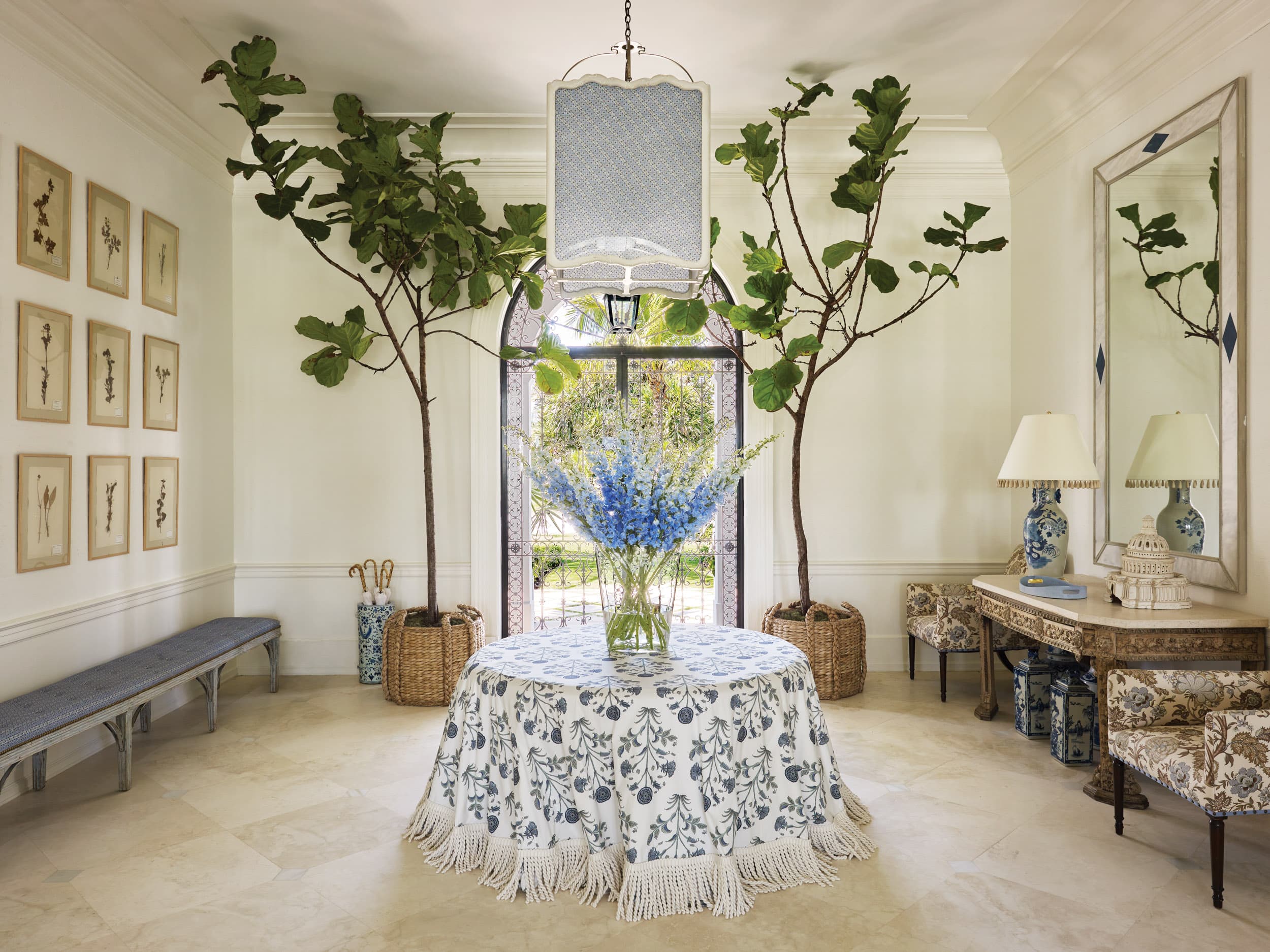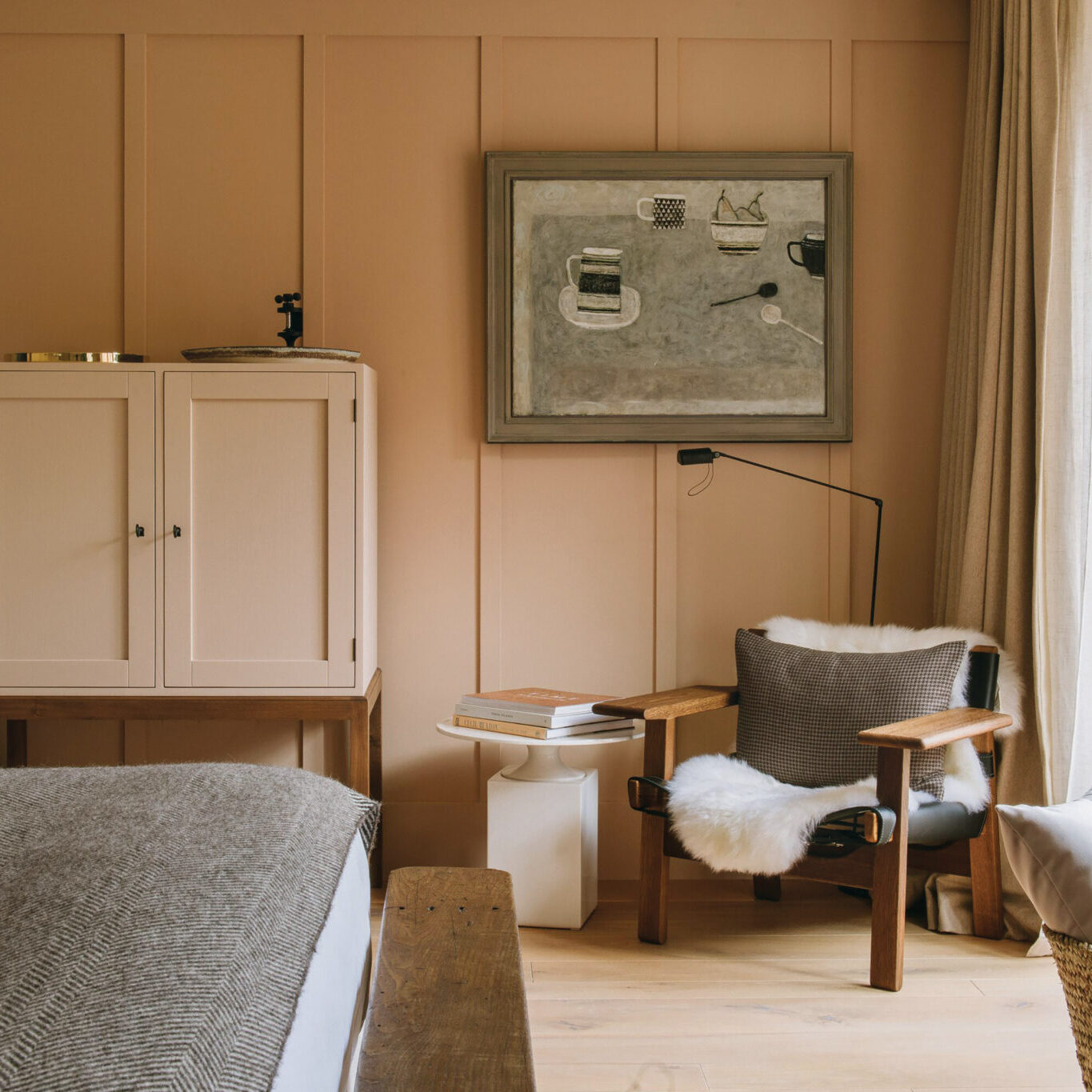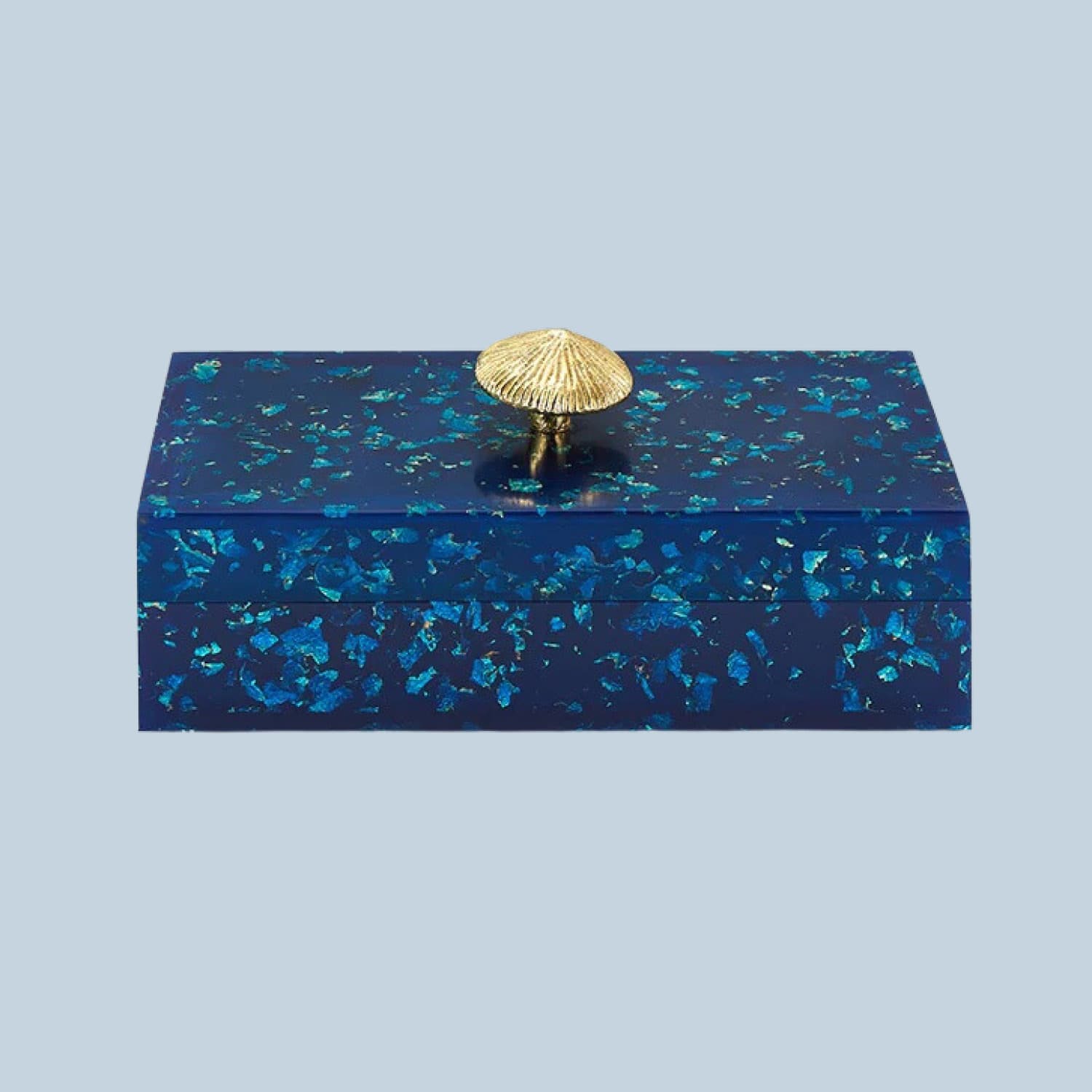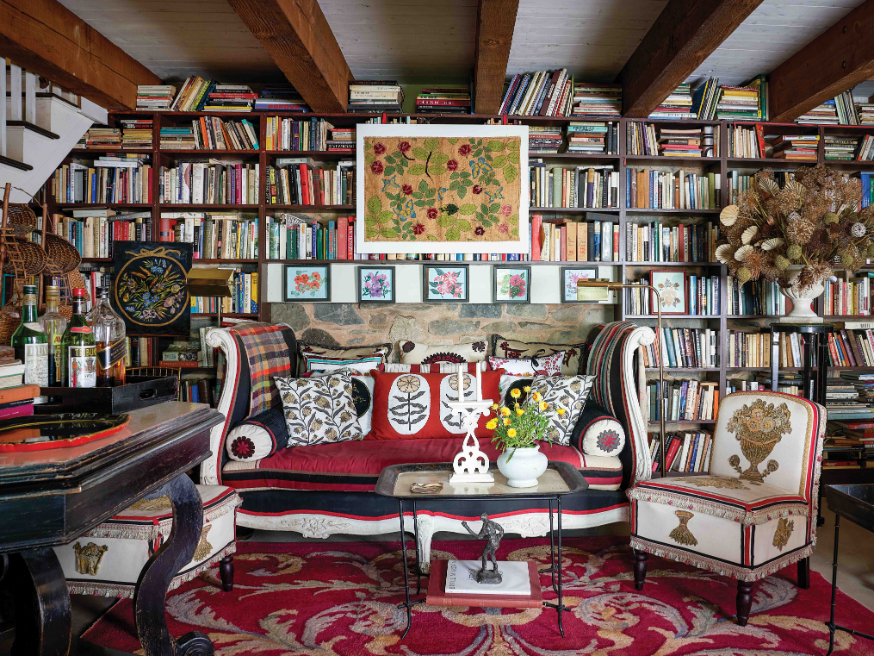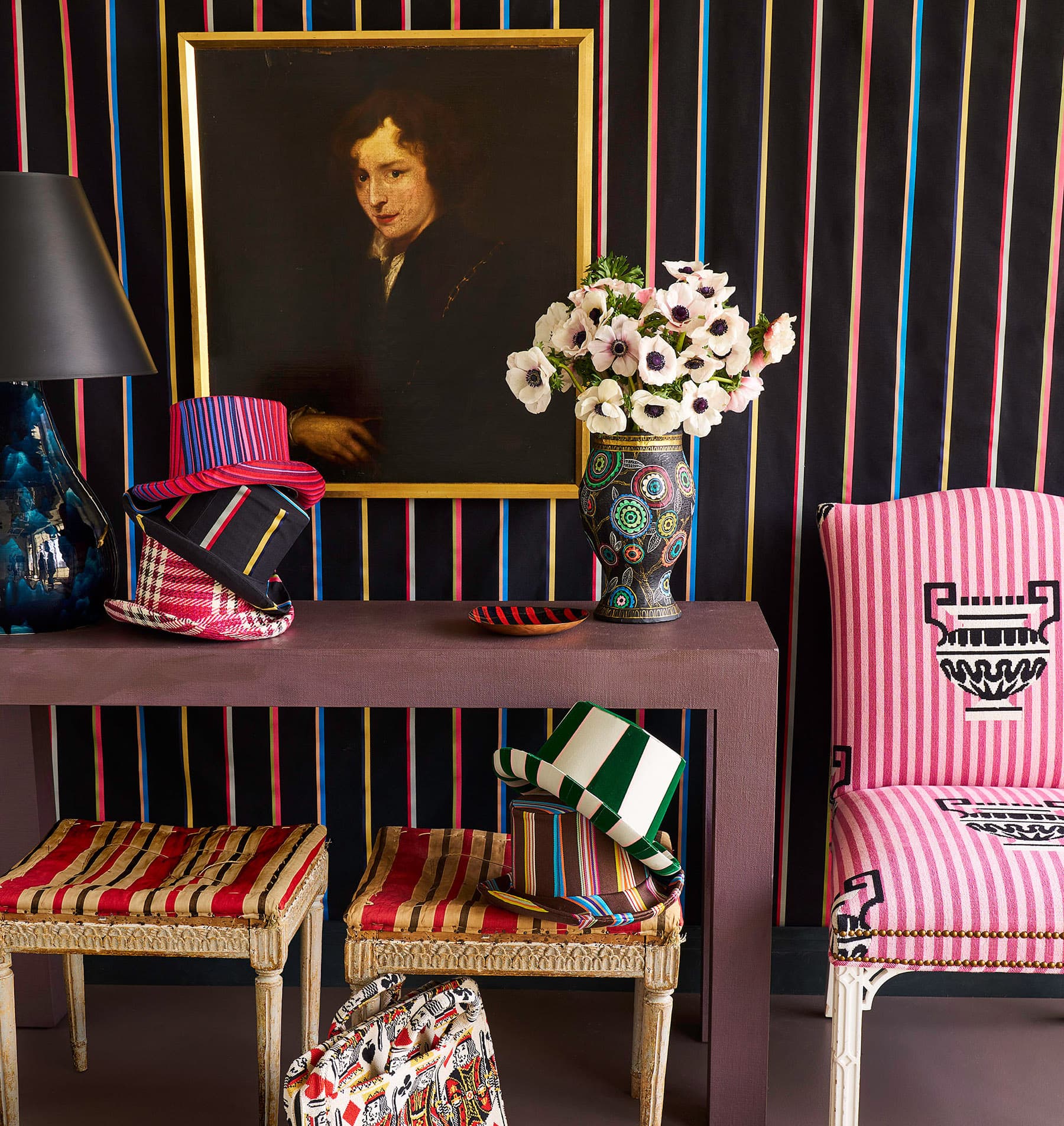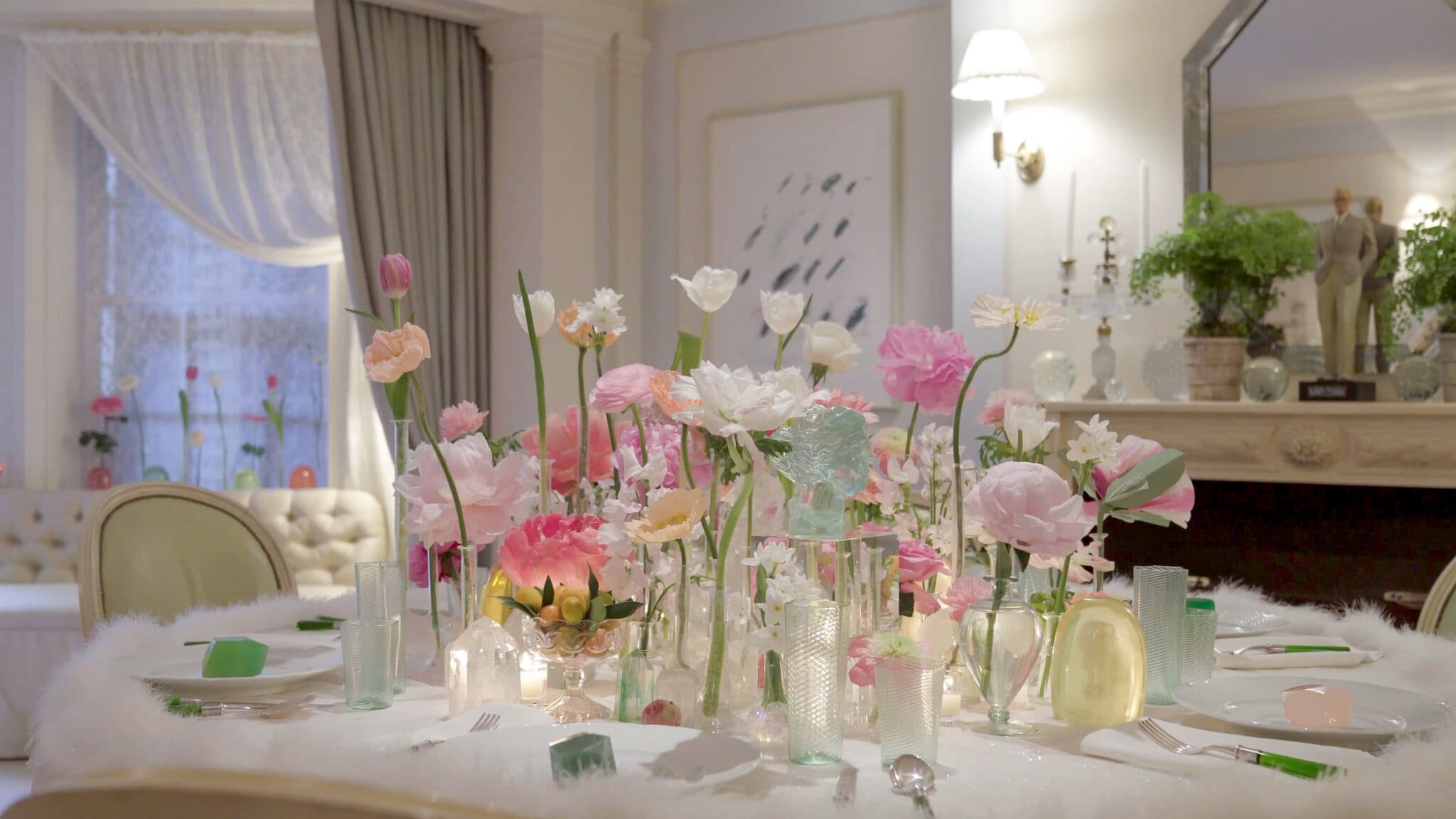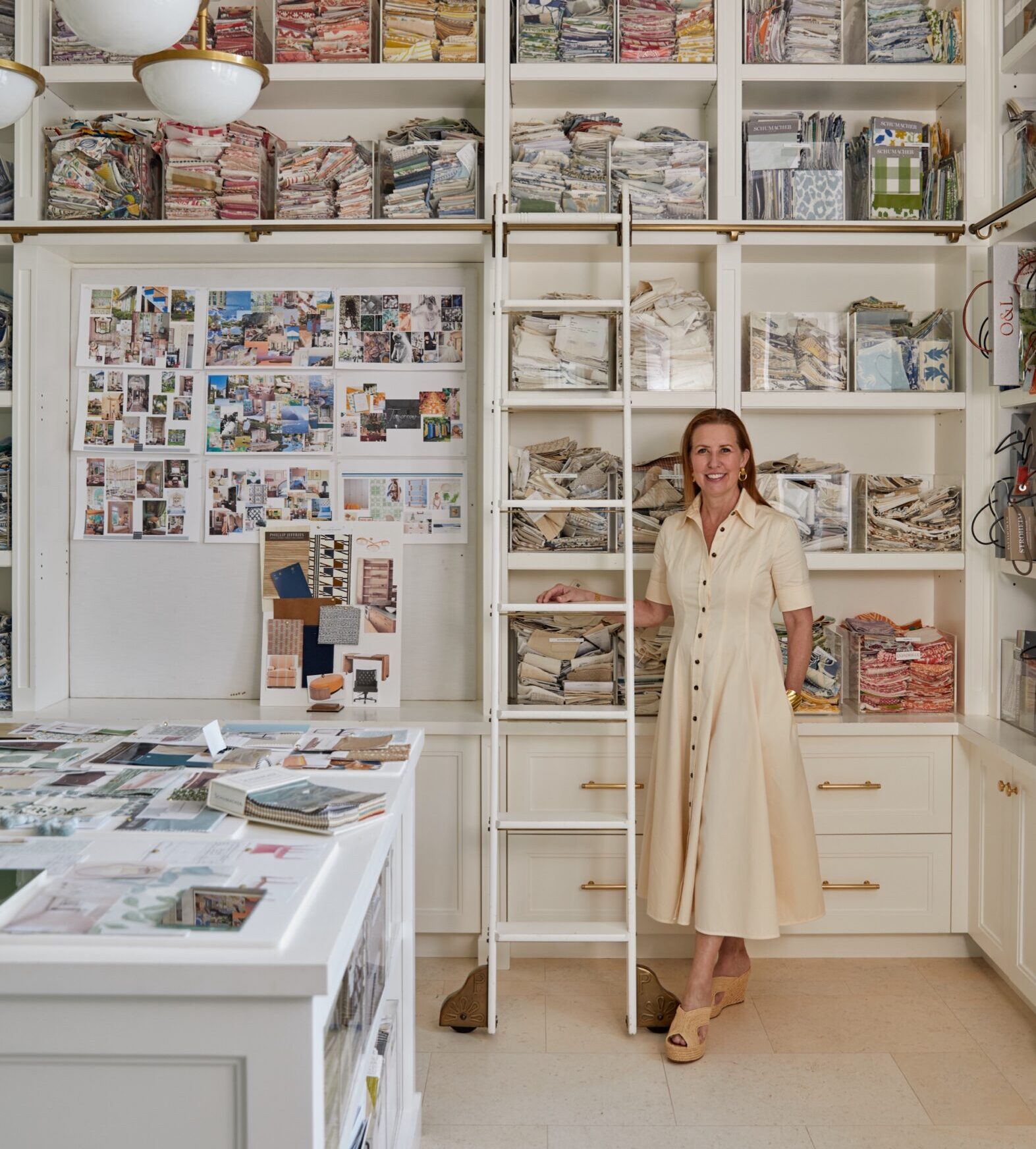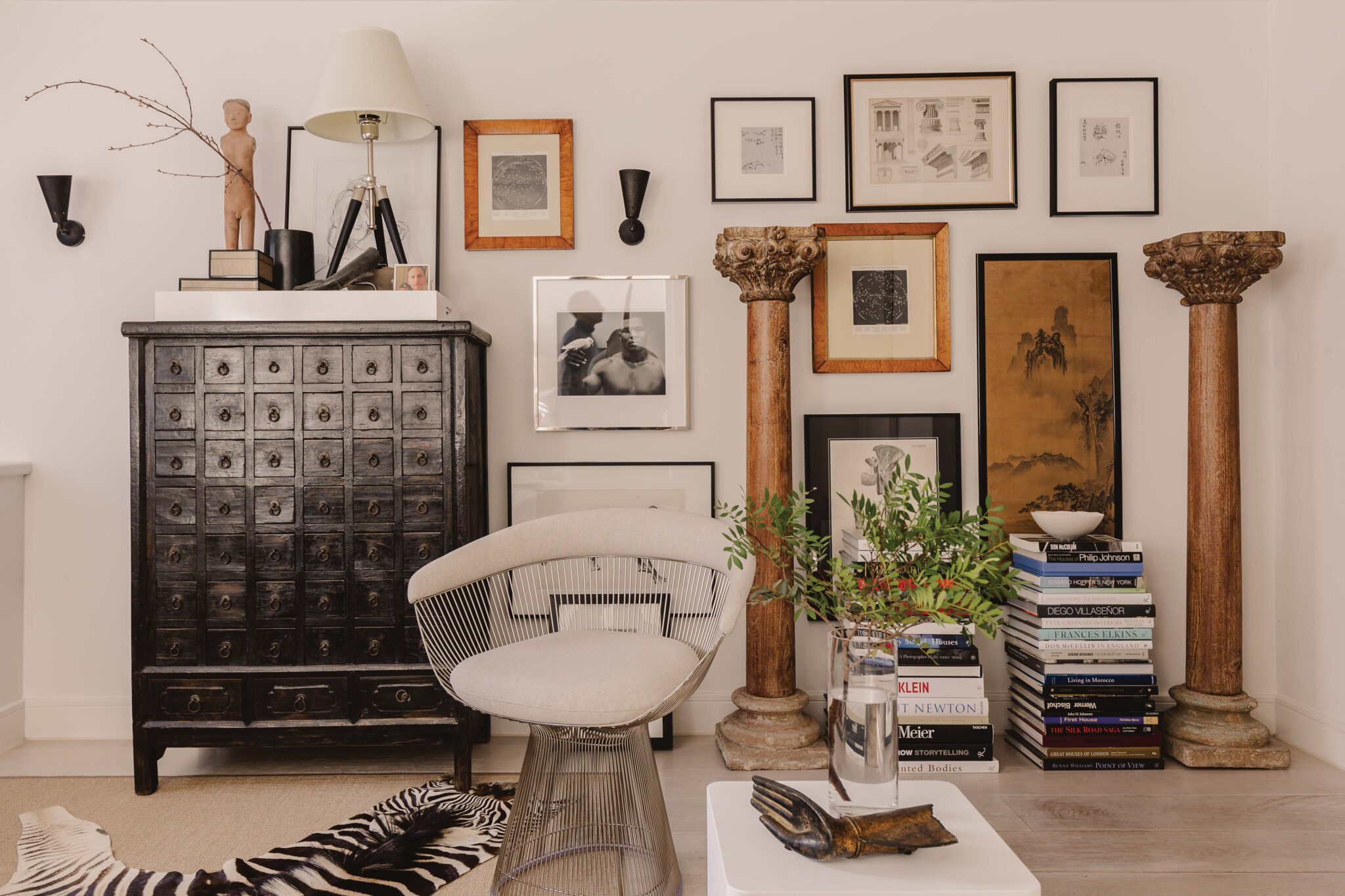Educated in architecture and adept at everything from flower arranging to prop styling, Anthony Amiano may soon become best known for his remarkable finesse with a staple gun. By day, he’s a marketing manager at the New York architectural firm Ferguson & Shamamian; he also works as a freelance stylist and design consultant and, in his spare time, collects beautiful objects, creates fanciful floral arrangements, and constantly redecorates his 600-square-foot apartment in Brooklyn.
“I treat my apartment like a photo shoot,” says Amiano. “I am always moving things around and trying new things.” Many of the design ideas he test-drives at home are picked up on the job: As a stylist and photo shoot producer, he works in a wide range of beautiful homes overseen by an equally wide range of designers, providing him with a constant stream of inspiration—and cravings. “I will see something in someone’s house on a shoot and think, Oh my gosh, I want my version of that. I can justify buying pretty much any little object as a styling resource, telling myself, Oh, that could be a prop somewhere.”
-
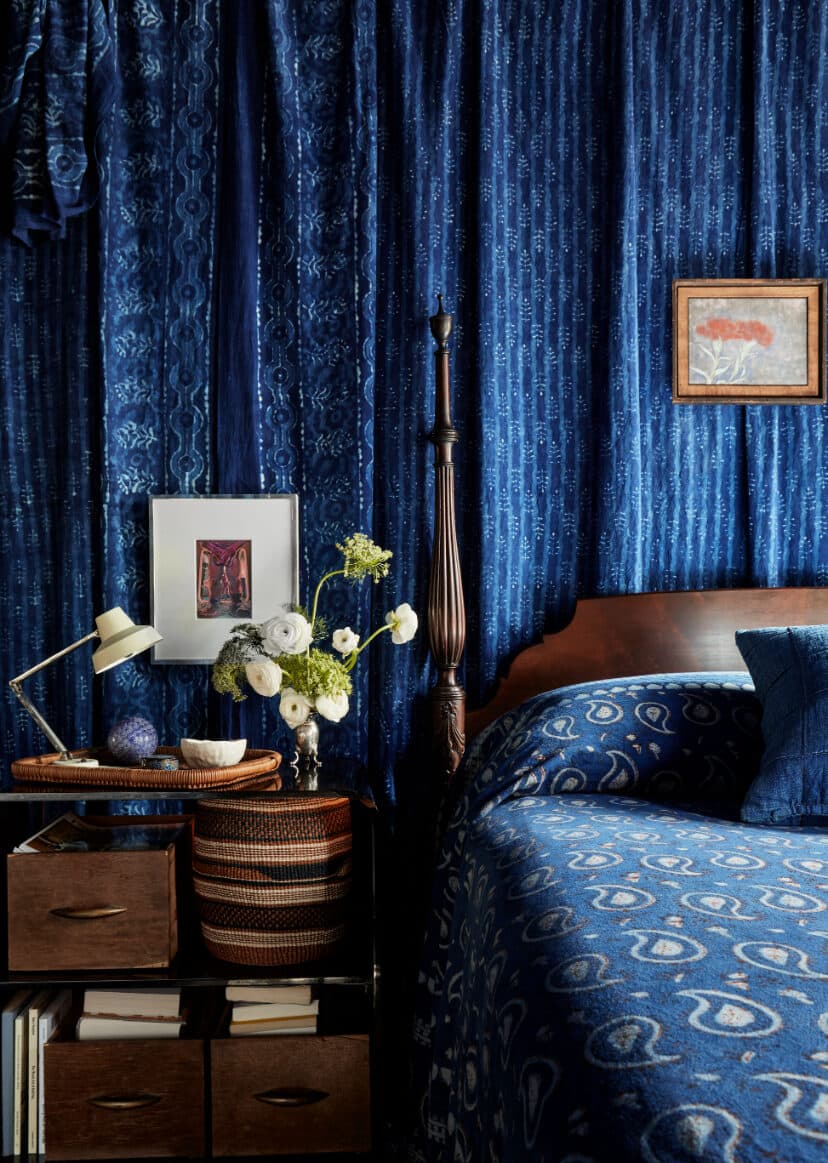
Though he was inspired by very grand tented spaces hung in satin, Amiano wanted something more casual and less tailored for his own bedroom, so he went with “a more humble material”— indigo block-printed bed sheets from Winter Sun & Summer Moon, a shop in Rhinebeck, New York—and installed them with a relaxed drape.
Michael Granacki -

Amiano stands next to a chest of drawers once sat in his childhood bedroom—”My brother has a matching one from the room we shared as kids,” he says. The bedding is also from Winter Sun & Summer Moon.
Michael Granacki
During his early years at Ferguson & Shamamian, Amiano encountered one design concept that made a particularly big impression: tented rooms. In several grand Park Avenue apartments, he glimpsed gorgeous spaces painstakingly swagged in sumptuous fabrics that evoked for him the dramatic work of Renzo Mongiardino and Napoleon Bonaparte’s bedroom in Château de Malmaison. None of these rooms survived the renovations—the designers in charge decided they were no longer au courant—but their memory stuck with him. And when he found himself, after the end of long relationship, craving a project engaging enough to get him out of his head, he took the plunge. “I really needed my life to look and feel different and I wanted to dive deep into a fantasy world to make something that felt like it was just for me,” he recalls.
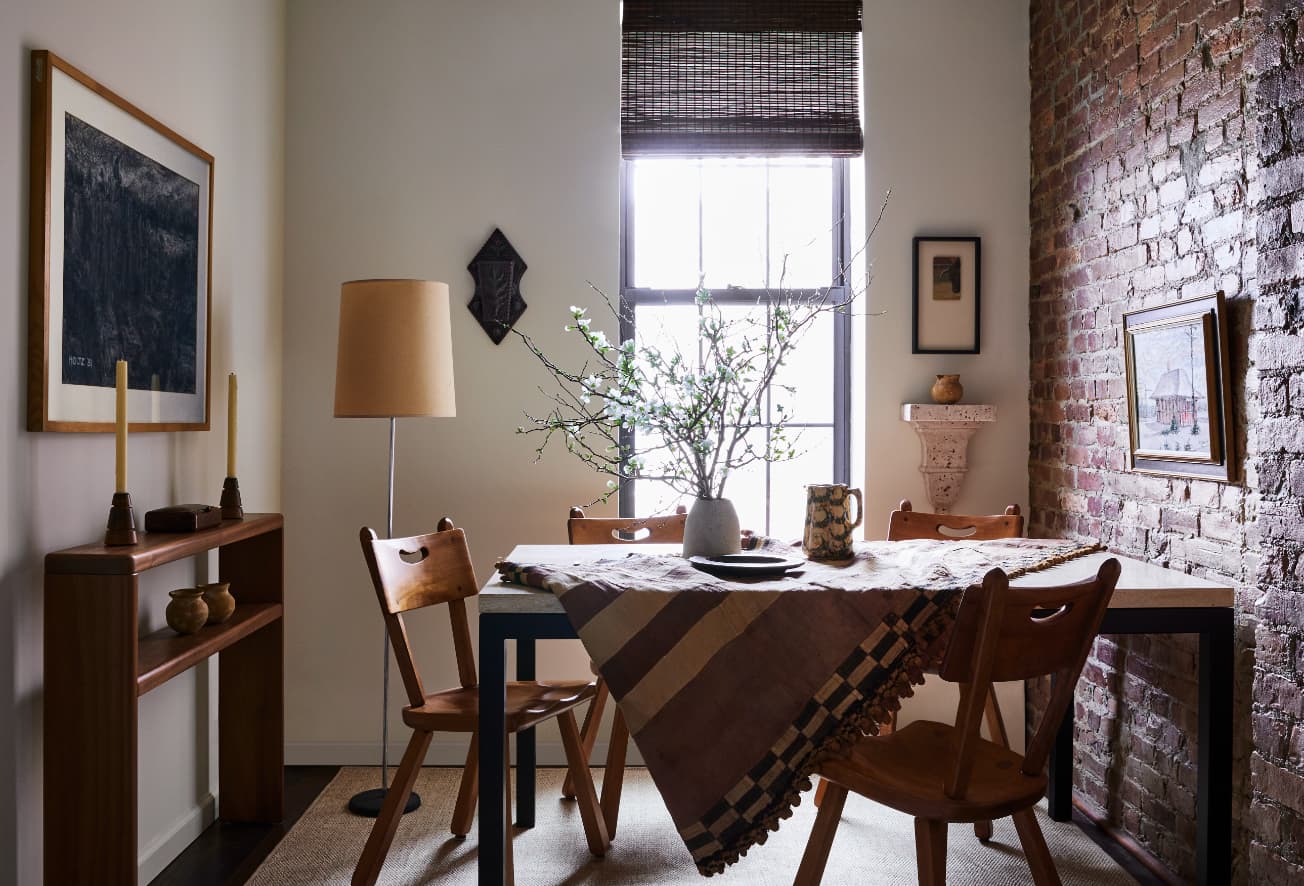
Amiano’s dining room serves double duty as a home office, with a travertine-topped parsons table from Crate & Barrel and a set of vintage Cushman chairs from Humble House Brooklyn as command center. The painting on the right, of his hometown train station, once belonged to his grandparents. On the left, a Paul W. Holtz work hangs above custom console table by Ford Bostwick.
Michael Granacki-

Amiano’s home features his collection of gems from flea-market excursions and thrift stores, including a pair of vintage Danish candlesticks and an inlaid dish used as a serving tray. An antique Kuba cloth covers the table.
Michael Granacki -

A mix of new and old—a vintage Eames chair next to a Bludot sofa, a 19th-century antique accent table with a Room & Board ottoman, a CB2 bookcase dotted with art (including a favorite photograph by Conrad Ventur of Warhol star Mario Montez)—fills the apartment’s living room.
Michael Granacki
Armed with “thousands” of sketches, a stack of king-size indigo bed coverlets, a ladder, and a staple gun, Amiano single-handedly created an atmospheric, dramatic, and dreamy tented bedroom that rescued him from his malaise, boosted his creative confidence, and always takes him somewhere new. “When I draw the drapes, the windows disappear and I feel fully cocooned,” he says. “I could be anywhere.” The fabric’s noise-dampening quality heightens the effect, making the room an escape from the hectic nature of his work life and the city itself.
Beyond the bedrooom, the apartment is painted a warm white (Benjamin Moore’s Timid White) and decorated mostly in neutrals, with spice provided by a wide range of organic textures and materials, including natural woods in different tones, antique textiles, raw brick, and rugged woven rugs. This low-key palette provides an easygoing backdrop for Amiano’s ever-changing collection of art and objects. Some of these pieces were bought in exclusive boutiques; others were found on New York City curbs. “I hate buying things new, when I can avoid it,” Amiano says. “They’re just not as interesting. I love old things with a little patina and their own little story.”
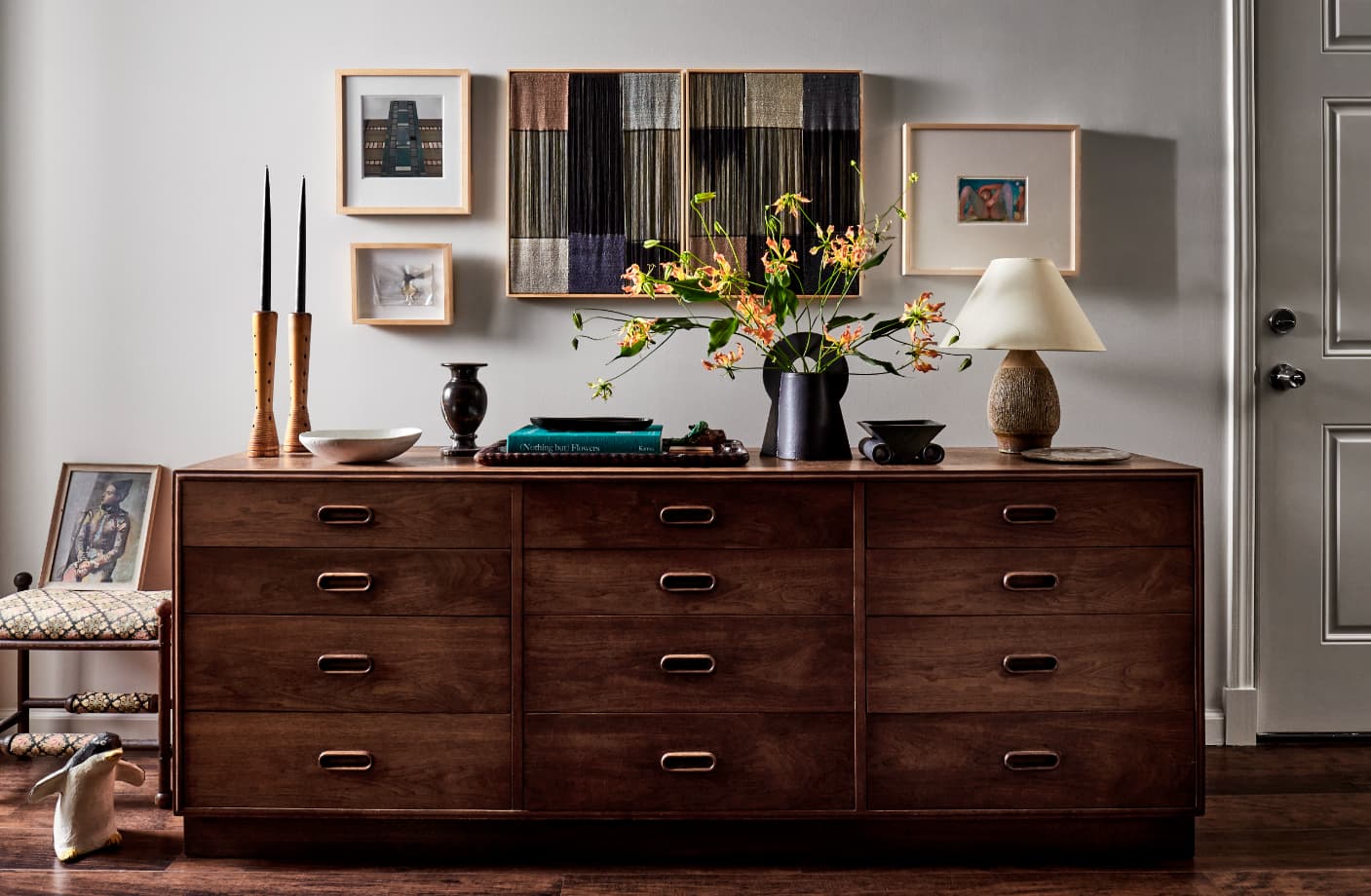
A vintage chest holds more treasures, like a pair of vintage candlesticks from A.Thierien, a case and dish by Devin Wilde Ceramics, and a 1960s Danish Søholm Lamp. Two paintings by Carolina Jimenez—“Sunrise” and “Nightfall,” 2022—anchor the gallery-style arrangement above.
Michael Granacki-

Two colorful works by Abel Macias add a vibrant punch to a dining nook in the kitchen, where Amiano paired a Saarinen-style tulip table from Coming Soon New York with two vintage Cushman chairs from Humble House Brooklyn.
Michael Granacki -

In addition to working as a marketing manager at Ferguson & Shamamian, Amiano is a skilled prop stylist, evidenced by his floral arrangements.
Michael Granacki
When it comes to decorating a small space, Amiano has two tips: First, be mindful of scale. His sofa is almost one-third shorter than a typical model, which allows him to place a chair on either side and create a more gracious conversation area. Second, be passionate in your choices. “You’re not going to have a lot of things,” he advises, “so you’d better love every one of them!”

